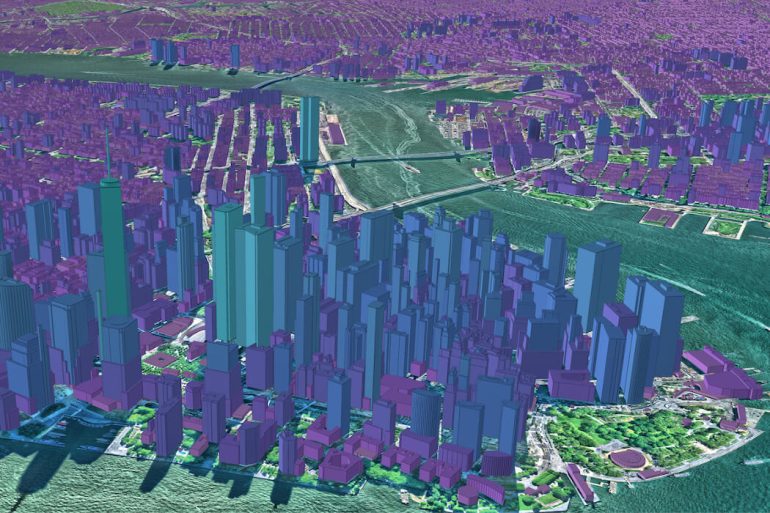Ecopia AI has announced a partnership with Sustainable Development Technology Canada (SDTC) to build three-dimensional vector maps of the country’s “top 100” cities.
The Toronto-based startup, which is “on a mission to create a digital twin of the Earth,” uses artificial intelligence (AI) to convert high-resolution imagery into high-definition (HD) vector maps, which are vector-based collections of geographic information system data. SDTC has committed $8 million CAD in grant funding towards the project.
“This data will offer the foundation of a digital twin for cities across Canada.”
-Jon Lipinski, Ecopia
By constructing standardized, digital representations of cities, Ecopia hopes to help municipal stakeholders better understand and manage their cities. The digital mapping data created through this project will support sustainability-related initiatives and the Government of Canada’s goal to reach net-zero emissions by 2050.
“We’re excited and honoured to be leading the creation of this high-precision 3D map of Canadian cities,” said Ecopia co-founder and president Jon Lipinski. “This data will offer the foundation of a digital twin for cities across Canada—providing data that will support smart, safe, sustainable cities.”
Founded in 2013, Ecopia specializes in extracting insights from geospatial data. Ecopia, which has also previously received funding from SDTC, helps organizations analyze and monitor business processes, from asset management to risk assessment and disaster response.
Today, the company’s HD vector maps are used for hundreds of commercial and government applications across more than 100 countries around the world. The Government of Canada already uses Ecopia’s tech to help deploy high-speed internet across rural areas.
RELATED: Ecopia lands $3.39 million federal government contract for broadband mapping
“Digital maps serve as the foundation for many applications that help facilitate economic growth, community development, and climate resilience,” stated Ecopia in the press release. “However, Canada has historically operated without a high-precision, uniform digital representation of its cities—the creation of such a map offers an opportunity to increase the efficiency and accuracy of decision-making within cities and across the nation.”
Maps Ecopia creates through this SDTC project will chart each city’s buildings, roads, bridges, railways, driveways, sidewalks, parking lots, swimming pools, sports fields, bodies of water, forests, grasslands, bare lands, and paved areas.
“Big data play a vital role in achieving and maintaining optimum environmental sustainability,” said SDTC president and CEO Leah Lawrence, who expressed hope that the funding will “help Ecopia optimize their data solution, paving the way for bigger market opportunities and greater sustainability.”
According to Ecopia, potential applications of its 3D vector maps of Canadian cities span government, insurance, telecommunications, transportation, public safety.
RELATED: Ecopia Tech, Routific, GHGSat among cleantech startups receiving SDTC funding
Climate resilience use-cases include measuring rooftop solar installations, assessing tree-canopy coverage, and flood mapping.
It remains unclear how Ecopia classifies Canada’s top 100 cities. The company did not respond to an email question about this by time of publication.
Thunder Bay and Windsor are consortium partners on the SDTC-backed initiative, and will be “at the forefront of deploying these maps for sustainability-related applications,” according to Ecopia.
Ecopia plans to offer each mapped city a two-year license to the data to support climate resilience initiatives. The startup told BetaKit that the 3D mapping data will be ready “starting in 2023.”
Feature image of 3D map of NYC created by Ecopia, courtesy Ecopia.


